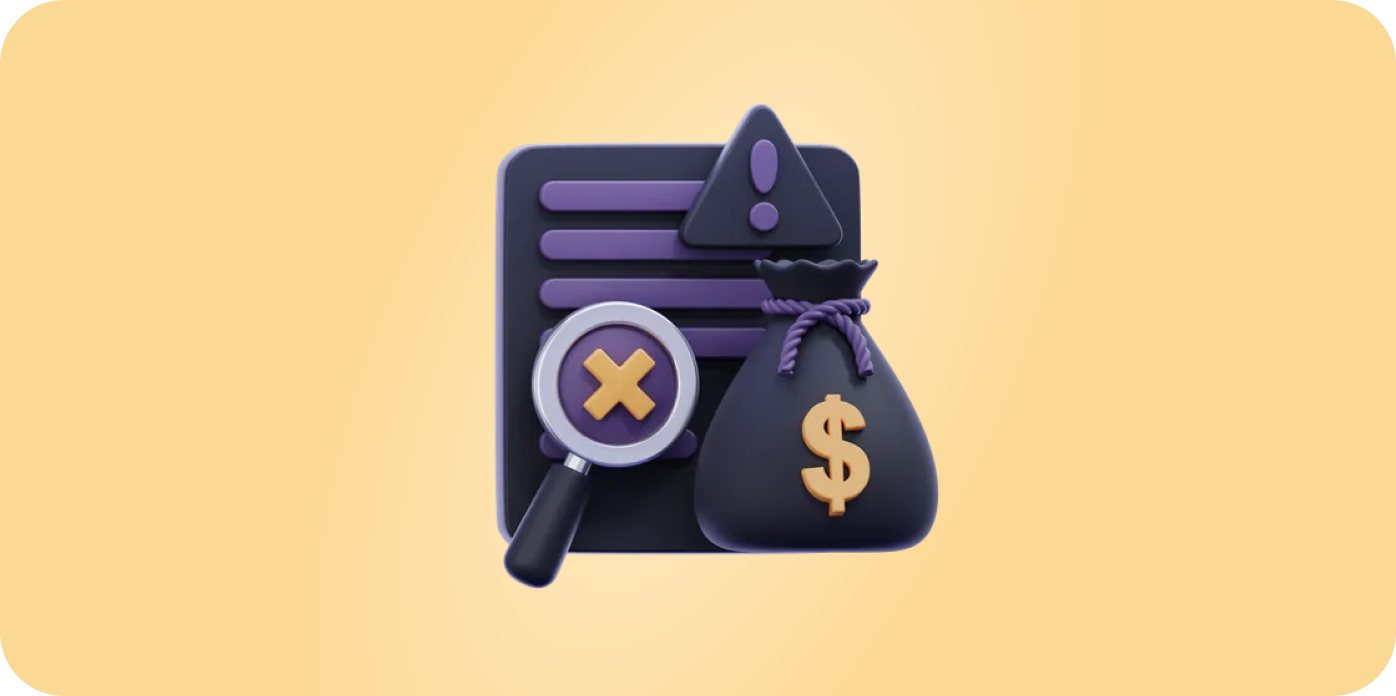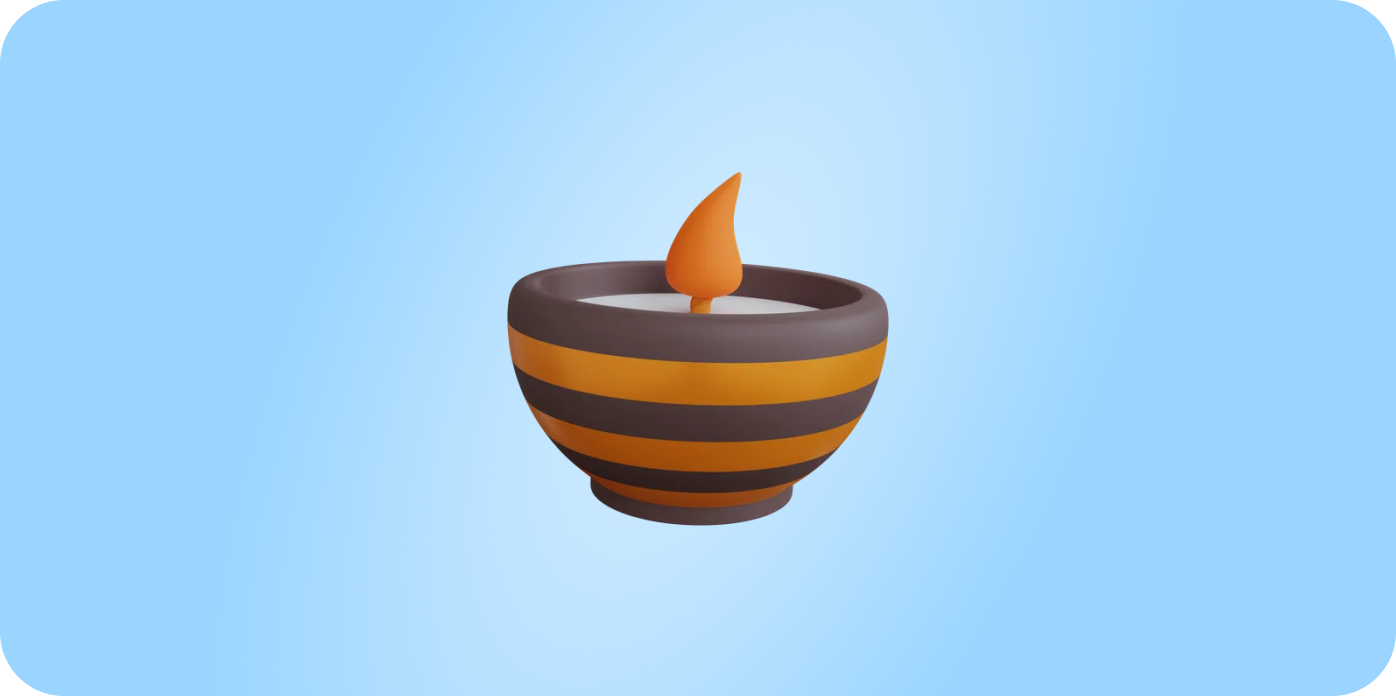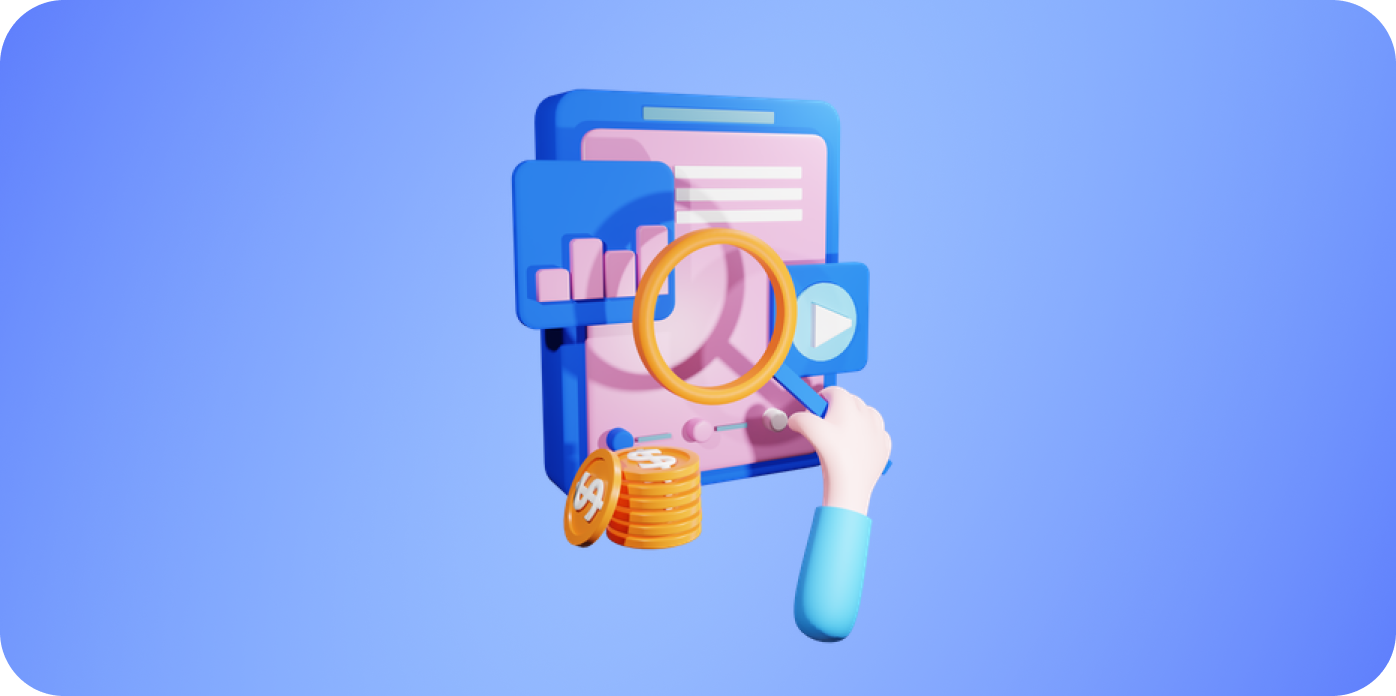What’s Holding You Back?
You’ve got an incredible product. You’ve invested time, effort, and resources into perfecting every detail. But the clicks and conversions aren’t coming despite your best efforts.
You’ve poured countless hours into creating content, yet your blog posts and social media updates seem to vanish. How do you turn fleeting interest into lasting customer relationships?
SaaS content marketing is crucial for attracting, engaging, and retaining customers in the competitive software-as-a-service (SaaS) industry. SaaS companies can establish themselves as thought leaders, build trust with their target audience, and ultimately drive profitable customer action by creating and distributing valuable, relevant, and consistent content.
Wondering how is Saas content marketing different from a performance marketing strategy?
SaaS content marketing aims to attract and retain customers through valuable content, building brand awareness and trust. Performance marketing focuses on driving immediate actions like lead generation and sales through targeted digital tactics, emphasizing measurable results.
According to SEMRush’s 2023 Global Report, 97% of companies saw success with content marketing for SaaS.
Key benefits include:
- Generating leads with valuable content
- Establishing industry authority
- Increasing brand awareness
- Building customer relationships
- Reducing customer acquisition costs
But how do you create content that resonates, engages, and ultimately converts?
Here are the key steps to create an effective SaaS content marketing strategy for 2024:
1. Identify Your Target Audience
Do you know who your ideal buyer is? Creating a clear profile involves analyzing demographics, interests, pain points, and buying behavior. Use analytics tools to understand the characteristics of your existing audience on social media platforms.
Developing detailed buyer personas is crucial. A buyer persona is a semi-fictional representation of your ideal customer based on market research and real data about your existing customers. Include details like job title, industry, company size, challenges, and goals.
This level of specificity helps in creating content that speaks directly to the individual’s needs and pain points.
2. Understand Your Audience’s Pain Points
Identifying potential pitfalls and obstacles at each stage of the sales funnel is essential. Put yourself in the shoes of your customer and walk their journey. This helps in tailoring content that addresses specific challenges.
Once you have understood what their journey looks like, create a customer journey map to visualize the steps your potential customers take as they progress through the marketing funnel.
For example, during the awareness stage, potential customers might struggle to understand what solutions are available for their problems. Here, educational content such as blog posts, infographics, and explainer videos can be highly effective.
3. Content Types for Different Stages of the Customer Journey
- Awareness Stage: Blog posts, Infographics
- Consideration Stage: Case studies, Webinars
- Decision Stage: Testimonials, Product demos
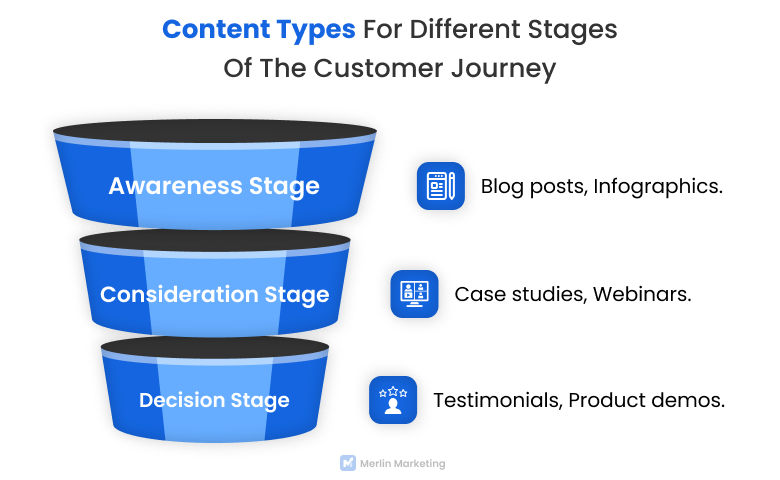
Use customer feedback, surveys, and interviews to gather insights about their pain points. Tools like Hotjar can also provide heatmaps and session recordings to see where users are getting stuck on your website.
4. Define Your Content Marketing Goals
Clear goals keep your strategy focused and results-oriented. Set specific, measurable goals that align with your overall business objectives, such as increasing brand awareness, generating leads, or reducing customer acquisition costs.
According to Forbes, Content marketing costs 62% less than traditional marketing and generates about 3 times as many leads.
For reducing customer acquisition costs, investing in content that educates and nurtures leads throughout the sales funnel can result in higher conversion rates and lower overall costs.

5. Develop a Content Plan
A content plan for a SaaS company might include weekly blog posts, monthly webinars, quarterly ebooks, and regular social media updates. Each piece of content should have a clear purpose and target a specific stage of the buyer’s journey.
Use tools like Trello or Asana to manage your content calendar and ensure timely publication.

Repurpose content to maximize its reach. A single blog post can be transformed into an infographic, a video, and several social media posts. This not only saves time but also ensures that your content reaches different audience segments across various platforms.
6. Optimize for Search Engines
Conduct keyword research to identify the terms and phrases your target audience is searching for. Optimize your content by incorporating relevant keywords, meta tags, and descriptions. This helps in improving your content’s visibility and reach.
Use tools like Ahrefs, SEMrush, or Moz to find relevant keywords and analyze their search volume and competition.

Incorporate these keywords naturally into your content, including headings, subheadings, and meta descriptions. For example, if you’re targeting the keyword “B2B SaaS content marketing,” ensure it appears in your title, meta description, and several times throughout the content.
Additionally, focus on creating high-quality backlinks to improve your site’s authority. Quality backlinks signal to search engines that your content is valuable and trustworthy, which can improve your rankings.
For effective link building strategies, consider guest posting, collaborations, and creating shareable content.
Still Unsure where to start? Click here!
7. Distribute and Promote Your Content
How do you plan to share your content?
Distribute it across multiple channels, including your website, social media platforms, email newsletters, and industry forums.
Email newsletters are excellent for nurturing leads and keeping your existing customers informed. Use tools like Buffer or Hootsuite to schedule your posts and ensure consistent distribution.
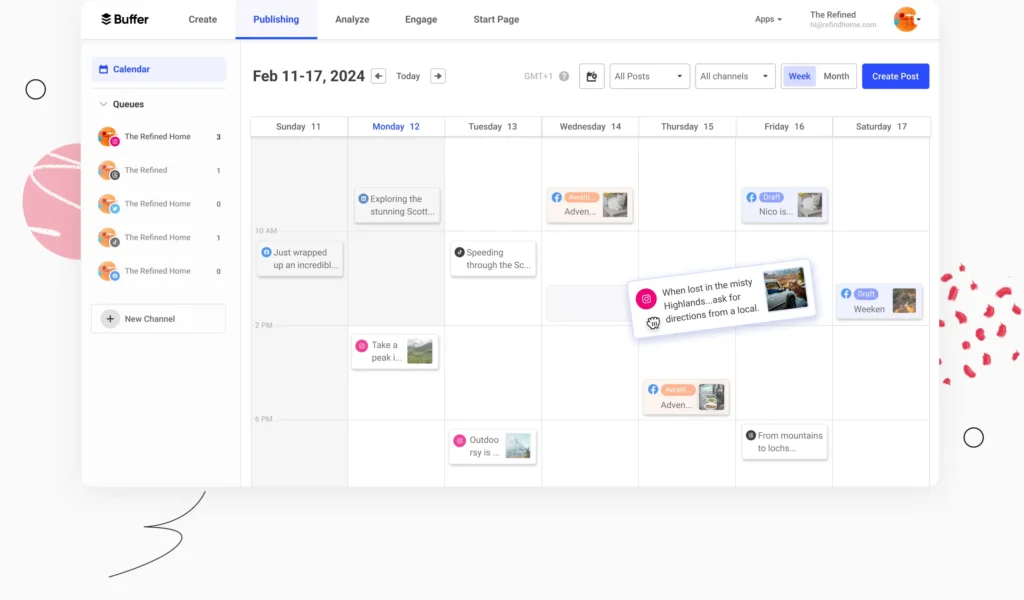
Engagement is crucial in content promotion:
- Respond to comments on your blog and social media posts
- Participate in relevant industry discussions
- Collaborate with influencers to extend your reach
8. Measure and Analyze Your Results
Tracking and analyzing your content’s performance is crucial for refining your SaaS content marketing strategy.
Monitor key performance indicators (KPIs) such as website traffic, lead generation, conversion rates, and customer retention. Use analytics tools to identify which content assets are performing well and where there are opportunities for improvement.
Google Analytics, HubSpot, and other analytics tools can provide detailed insights into your content’s performance.
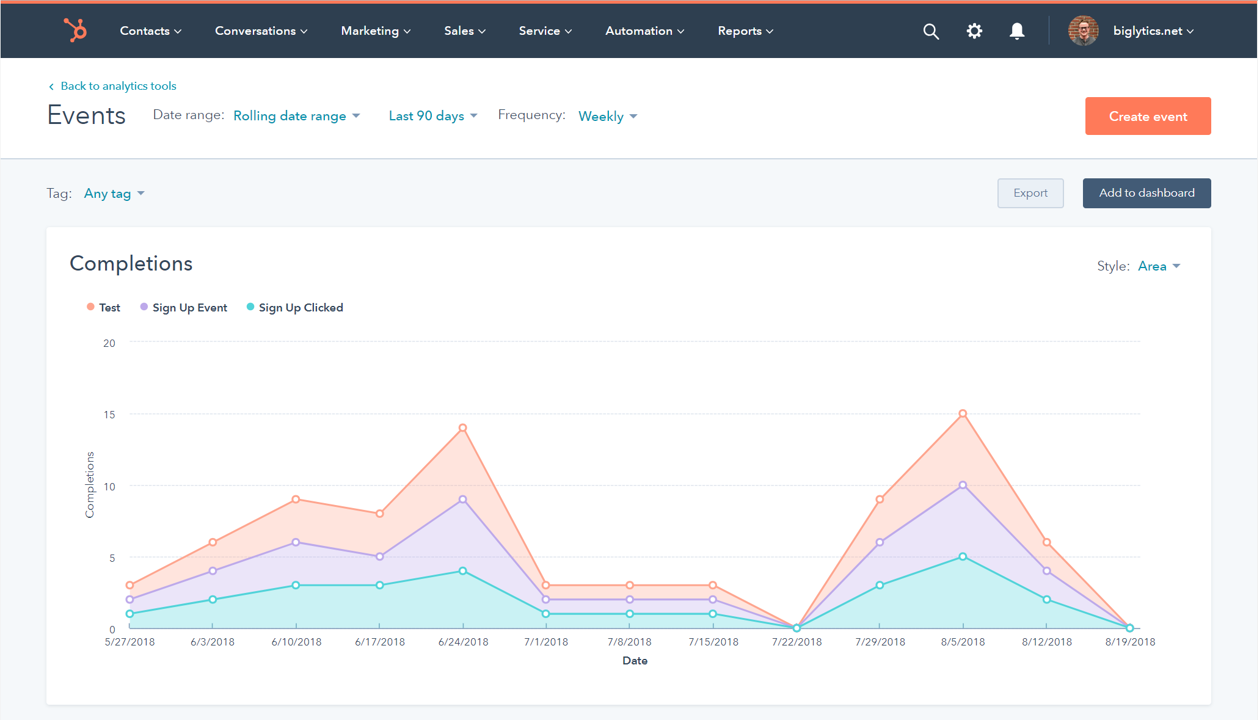
For example, if a particular blog post is driving a lot of traffic but not many conversions, you might need to optimize the call-to-action (CTA) or add more relevant content to the page.
How Can SaaS Companies Avoid Common Pitfalls in Content Marketing?
Navigating content marketing for SaaS companies can be tricky, especially without a SaaS content marketing agency. Even with a strong strategy, it’s easy to fall into common traps that can derail your efforts.
What are the most common pitfalls and how can you steer clear of them?
Lack of a Cohesive Plan
A disjointed content approach can lead to wasted resources and inconsistent messaging, undermining your marketing efforts.
Action Tips:
- Set specific, measurable goals aligned with your business objectives.
- Create a content calendar using tools like Trello or Asana to plan and schedule content.
- Regularly review and adjust your strategy based on performance data.
Focusing Solely on Top-of-Funnel Content
Concentrating only on ToFu content, which is designed to attract initial interest from potential customers, can lead to missed opportunities to nurture those leads and convert them into paying customers.
Action Tips:
- Map the customer journey to understand each stage.
- Develop content for every stage: awareness (blog posts, infographics), consideration (case studies, webinars), and decision (testimonials, demos).
- Regularly update content to align with evolving customer needs and journey stages.
Producing Generic Content
Generic content fails to resonate with your audience, resulting in low engagement and poor conversion rates.
Action Tips:
- Develop detailed buyer personas to understand your target audience’s needs and preferences.
- Incorporate interactive elements like webinars, podcasts, and forums to engage your audience.
- Gather feedback through surveys and direct interactions to continually refine your content.
Poor SEO Practices and Hard-to-Read Content:
Ignoring SEO best practices and creating content that is difficult to read can severely limit your content’s visibility and effectiveness.
Action Tips:
- Conduct keyword research using tools like Ahrefs or SEMrush and incorporate relevant keywords naturally.
- Optimize meta descriptions, and headings, and include high-quality backlinks.
- Structure content with headings, subheadings, bullet points, and visuals to improve readability.
Inconsistent Content Quality, Quantity, and Tone
Inconsistent content can damage your brand’s trust and engagement levels, leading to a fragmented audience experience.
Action Tips:
Establish and adhere to brand guidelines for tone, style, and visual elements.
- Use a content calendar to ensure a steady flow of high-quality content.
- Implement a review process to maintain content standards.
Delivering Non-Personalized Content
Generic content that doesn’t meet individual user needs can result in lower engagement and higher churn rates.
Action Tips:
- Utilize analytics to track user behavior and interactions with tools like HubSpot or Marketo.
- Implement dynamic content in emails and on your website to personalize user experiences.
- Provide tailored content recommendations based on user preferences and past interactions.
Conclusion
Ensuring that your content is well-planned, targeted, and personalized will enhance your brand’s visibility and engagement. It also helps in generating high-quality leads and improving SEO rankings. Effective content marketing strategies have shown results like increased brand awareness and search rankings.!

By avoiding common pitfalls and implementing these key strategies, you can build a robust SaaS content marketing plan that not only attracts and retains customers but also fosters long-term growth and a sustainable competitive edge.
Start your journey to mastering SaaS content marketing today and achieve remarkable results!
FAQs
Got questions?
If your questions remain unanswered, don’t hesitate to reach out; Merlin is here to provide the clarity you seek.




